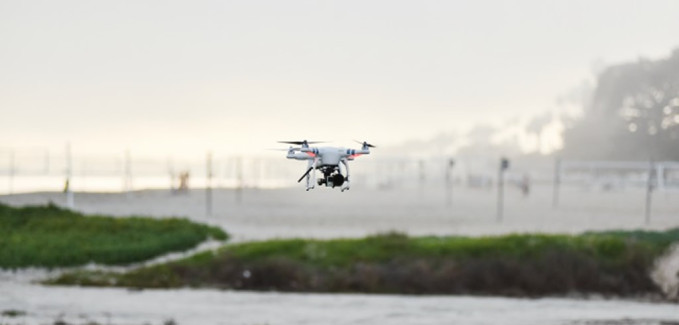
Recently, Intel has unveiled two kits to help consumers create their own drones and robots. The products were showcased at one of the company’s developer forums in China. The Robotic Development Kit is for robot enthusiasts, while the also aptly named Aero Kit has the parts necessary to build drones.
Create your own interface board and more
There’s a 40-pin general-purpose bus that comes with the robot kit and lets you build your own interface board. Furthermore, USB ports offer additional connectivity choices. There’s also a full-speed gigabit Ethernet port among the features offered in the kit.
Equipped to avoid obstacles
Both kits will have Intel’s RealSense 3-D camera, which will help the drones and robots avoid obstacles. That gadget can detect the size and shape of objects, and it even has depth perception.
The camera could theoretically allow people to make their own robots that can move over uneven terrain. Traditionally, it has been difficult to engineer robots that can climb stairs, but a Google-owned company called SCHAFT recently demonstrated a bipedal robot that can not only navigate stairs but also vacuum surfaces and lift over 130 pounds. That advancement might be encouraging to people who want to buy the Robotic Development Kit from Intel, then put the 3-D camera to the test.
The cost of crucial parts has greatly decreased, stimulating interest
Intel representatives haven’t put a price tag on the drone kit yet but have said the robotics kit will be only $249. That low cost is perhaps partially due to the progress made by the Kinect motion-sensing system, which was built for Microsoft’s Xbox gaming system.
Shortly after that technology became mainstream, people could get it at their neighborhood electronic stores. Intel hopes its RealSense camera, and these new kits, will have a similar effect by helping people become DIY creators and potentially stimulating further interest in robotics and drones.
Already, universities have noticed more incoming students wanting to enroll in robotics programs. Those educational options have existed for a while, but until a couple of years ago, graduates were forced to find jobs that were only minimally related to their chosen discipline.
Now, demand is rising because major companies are realizing the potential of the industry. Fortunately, the programs are ready to cope with the challenges that may result and educate students who can thrive when developing and working with new tech.
Giving people more options
The drone and robot kits represent Intel’s desire to branch out beyond personal computers. And that seems like a smart business move, especially since major companies are anxiously waiting to see what kind of potential drones and robots have. The above example of the stair-climbing bipedal robot shows how Google has invested in robotics. Besides, Amazon is one company that’s wondering if drones could help people get their goods faster.
If all goes according to plan for Intel, robots and drones may soon be seen as commonplace gadgets, rather than things in the future that seem like mere fantasies that are out of reach to laypeople.
Similarly to how the popularity of used network hardware has caused businesses to turn to the secondary market to get the items needed for their data centers rather than buying direct from vendors at costlier prices, these two Intel kits may broaden perspectives and make people realize they have the power to experiment and build robots and drones on their own rather than waiting for major companies to do it.
Eventually, robots and drones could become everyday items, much like wireless routers. You can pre-order the Robotic Development Kit from Intel now, and it’s expected to ship in June. Although there’s no release date schedule yet for the Aero Kit, it should be available sometime in the second half of the year.
Photograph by Blake Bronstad

